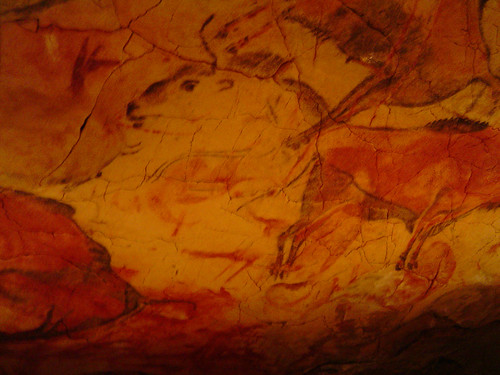 The Spanish Culture Ministry have announced that the Caves of Altamira the so-called Sistine Chapel of Paleolithic art are to reopen after eight years of closure, despite serious warnings from scientists that the world-famous ancient drawings and polychrome rock paintings within may suffer irrevocable damage from moisture generated by visitors.
The Spanish Culture Ministry have announced that the Caves of Altamira the so-called Sistine Chapel of Paleolithic art are to reopen after eight years of closure, despite serious warnings from scientists that the world-famous ancient drawings and polychrome rock paintings within may suffer irrevocable damage from moisture generated by visitors.
In a statement to reporters on Tuesday, Spanish Culture Minister Angeles Gonzalez-Sinde and the sites board of directors announced that public access will resume before the end of this year, albeit on an unspecified, restricted basis.
The cave complex located in the Cantabria region of northern Spain, and first discovered in 1879 was closed to the public in 2002, after green fungus generated by the body heat and breath of visitors was found to be forming on the facade of paintings in the main hall.
A replica of Altamira located just a few hundred metres away in a museum in the nearby town of Santillana del Mar has drawn 2.5 million visitors since 2001. But local government officials in Cantabria have lobbied for the reopening of the real thing, and successfully, after Altamiras board of directors last week voted in favour of resuming public access at the site which at its peak of popularity in the 1970s attracted as many as 3,000 people per day.
Altamira is an asset we cannot do without, the Cantabria regions president, Miguel Angel Revilla, commented.
Altamiras Paleolithic art is between 14,000 and 20,000 years old, and represents the first set of prehistoric cave paintings ever discovered. Several famous painters, including Pablo Picasso, are said to have been inspired by its charcoal and ochre images, which include several iconic depictions of red and black bison.
Decay of the paintings caused by a change in the fragile atmosphere in the cave was first detected in 1977, and Altamira was subsequently closed for five years, before reopening in 1982 with heavily restricted access. The waiting list to view the caves which were inscribed as a UNESCO World Heritage Site in 1985 later grew to the point where visitors had to book up to three years in advance.
Its Revillas intention to now try and attract heads of state to visit the caves. In recent years Revilla has been forced to turn down requests to visit Altamira from former French president Jacques Chirac and Mexican president Felipe Calderon, but he has expressed a hope that Barack Obama will be one of the first people to people to witness the cave complex’s ancient masterpieces after access resumes.
I have already written the invitation letter, Revilla said, and in English.
Scientists will greet the news of Altamiras imminent reopening with no shortage of dismay. Just last year, the governments main scientific research body, the CSIC, strongly recommended that the caves remain closed. The people who go in the cave have the bad habit of moving, breathing and perspiring, said CSIC researcher Mariona Hernandez-Marine.
We have made it very clear that it should not be reopened at this time, commented Sergio Sanchez Moral, director of a two-year CSIC investigation at Altamira. The caves have recovered from the damage, but to open them again is not a good idea. The risks are immeasurable.
Decay from moisture generated by visitors is a problem at many ancient sites around the world. Lascaux Cave in France, adorned with similarly venerable prehistoric paintings, has fought its own battle with fungus and has been closed for long periods over the last few years (read about the battle to preserve ancient rock art around the world in this article).
Extensive work had to be carried out on the Great Pyramid of Giza in the early 90s, using robots, in order to improve ventilation, after increased humidity from visitors began eroding the monuments stones (more on that in this article). Dr Zahi Hawass head of Egypts Supreme Council of Antiquities last year warned that a number of tombs in the Valley of the Kings, including the tomb of King Tut, may have to close soon if they are to be preserved.
Altamiras paintings are described by UNESCO as masterpieces of creative genius, and as humanitys earliest accomplished art.
Its thought that the caves location, deep underground where it is largely isolated from external climatic influences, is what has allowed its ancient artistic treasures to be preserved for so many centuries. As anticipation of Altamiras reopening grows, it remains to be seen whether they will endure much longer.
